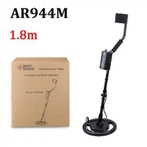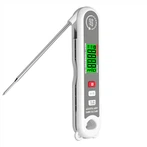The use of the stylus - how to accurately use the stylus
Electricity stylus is a wide range of electricians often use one of the things, used to differ from the object is not electrified. Its internal structure is a need for two electrodes of the light bulb, bubble filled with neon gas, commonly known as neon bubble, one of its pole to the tip of the pen, the other pole is connected in series with a high resistance to the other end of the pen. When the voltage between the north and south poles of the neon bubble arrived at a certain value, the north and south poles will be the onset of glow, glow strength and north and south poles of the voltage is proportional. When the charged body to ground voltage is greater than the neon bubble glow voltage at the beginning, and will be the top of the pen stylus touch it, the other end of the ground through the human body, so the stylus will glow. The effect of resistance in the stylus is used to bind the current flowing through the human body, to avoid the development of special hazards.
In addition to the ability of the stylus difference object is not electrically charged, there are several other uses:
(1) can be used for low-voltage phase verification, measuring the line between any wire is not the same phase or phase. Detailed approach is: stand on an insulated object with the earth, hands holding a stylus, and then in the two wires to be measured trekking check, assuming that the two stylus luminous is very bright, the two wires for the phase; Conversely, it is the same phase, it is the use of stylus in the neon bubble north and south poles of the difference between the voltage and its luminous strength is directly proportional to the principle of the difference.
(2) can be used to differentiate between communication and direct current. In the test with the stylus, assuming that the stylus neon bubble in the two poles are glowing, is the communication of electricity; assuming that only one of the two poles of the pole is glowing, it is direct current.
(3) can be different from the positive and negative poles of direct current. The stylus will be connected to the DC circuit to check, neon bubble light is the negative pole, does not light a pole is positive.
(4) can be used to differentiate DC is not grounded. Insulated to ground in the DC system, can stand on the ground with a stylus touching the DC system in the positive or negative pole, assuming that the stylus neon bubble does not light up, there is no grounding phenomenon. Assuming that the neon bubble is bright, it is clarified that there is a grounding phenomenon, and its bright as in the top of the pen, it is clarified that the positive pole is grounded. If the light in the finger end, then the negative pole grounding. However, it is necessary to point out that in the DC system with a grounding inspection relay, can not choose this method of difference DC system is not a grounding.
How to accurately use the stylus:
① in checking whether the electrical appliances and lines are charged before the first electric ground should be tried to see if the stylus is not defective, in order to prevent the difference between the error and electrocution.
② hold the pen, hold down the end of the pen with your fingers, other fingers to catch the pen body.
(3) When measuring electricity, the tip of the pen touches the test body, the hand touches the end of the stylus. Assuming that the test body is charged, the neon tube of the stylus will glow; if the neon tube does not glow, it is stated that the test body is not charged.
④ the insulation resistance of the stylus is less than 1 megohm can not be used.






